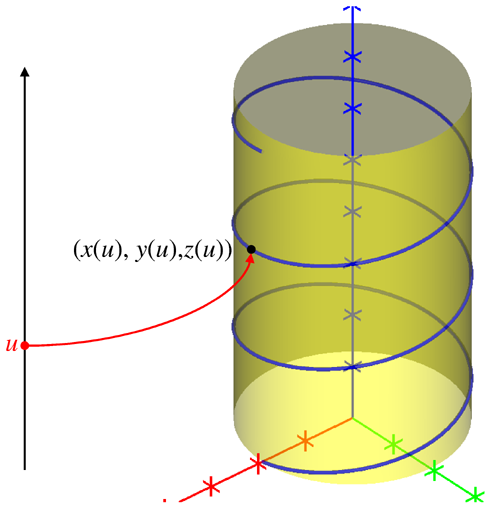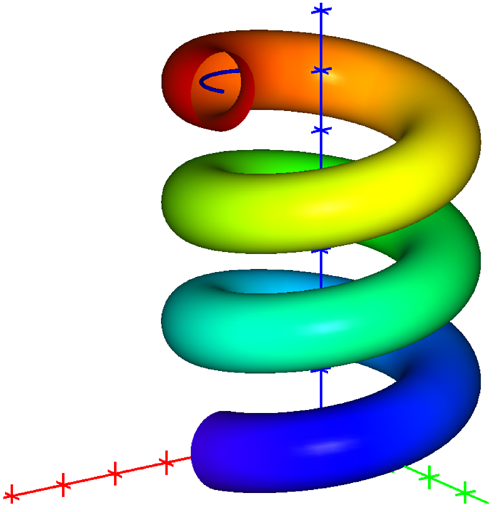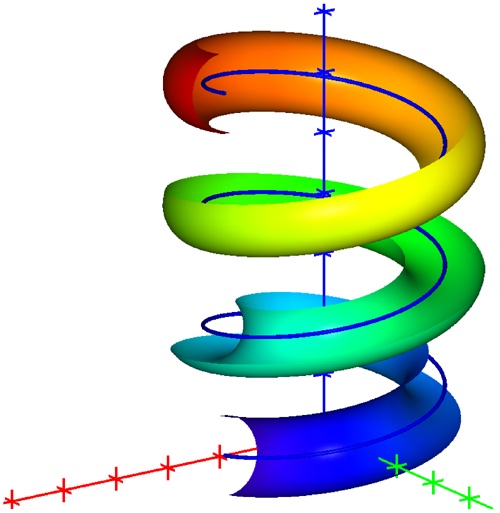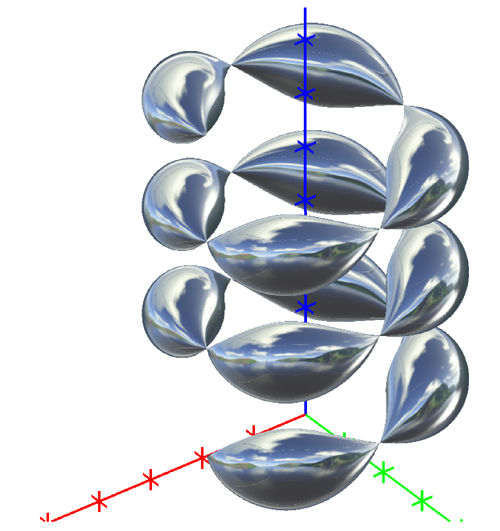
To determine a tube, one first has to enter the parameter equation of a central space curve. A parameter equation of a space curve is obtained similarly as a parameter equation of a plane curve. Only a third coordinate function must be added. This is illustrated in the curve below that is called a helix. The parameter equation is given by x(u) = 3*cos(u), y(u) = 3*sin(u) and z(u) = u/2, with u between 0 and 6*pi. In order to interprete this curve better, the cylinder on which this helix is situated is also drawn.

Secondly, we determine the radius of the tube. Let us take a radius of 1. Finally, we need to enter a range for the parameter v. This parameter determines whether full circles are places around the space curve or only parts of circles. We obtain full circles for instance by entering the limits 0 and 2*pi. We then obtain the following “spring”:

If we enter the range from pi to 2*pi for v, then we obtain the following half tube:

We see that the tube has torsion. VisuMath makes sure that the torsion of the tube is limited such that the tube never is “knotted”, at least when the radius is greater than 0.
If we also vary the radius, for example by setting the radius equal to sin(3*u), we obtain the following “necklace”:
